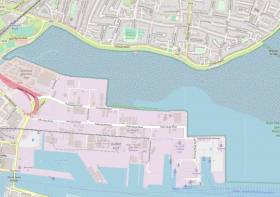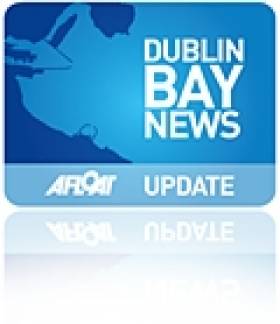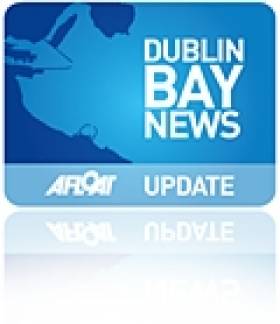Displaying items by tag: Clontarf
Clontarf Baths Left ‘Destroyed’ by Storm Betty
The Clontarf Baths have been left “destroyed” by the impact of Storm Betty as it passed over Ireland late on Friday and early Saturday (18-19 August), as RTÉ News reports.
A lifeguard at the baths who joined the clean-up operation on Saturday morning said damage caused is “very upsetting” and it could be up to a fortnight before the baths are returned to normal.
“It’s paradise working here, and to see it like this after the work we’ve put in to keep it clean and safe, and it’s just destroyed,” Anne Miller said.
Boats from nearby Clontarf Yacht & Boat Club were also damaged by the storm, with a wooden Kestrel that’s been in the club for nearly 50 years among three vessels affected.
Across Dublin Bay in Dun Laoghaire, a Cape 31 was blown off its hard-standing cradle and into the water, where it was later retrieved by crane.
RTÉ News has more on the story HERE.
Reclaim Land From Sea At Clontarf To Tackle Housing Crisis, Suggests Docklands Developer
Clontarf residents will likely be wide-eyed at a recent “radical” proposal by Docklands developer Harry Crosbie to reclaim land from the sea off the North Dublin suburb.
According to The Irish Times, the property mogul suggests using Dutch engineering knowhow to reclaim some 250 acres between the existing Docklands and Clontarf Road, which currently lie within the River Tokla Estuary Special Protection Area, that could be repurposed for homes for 65,000 people and help tackle the housing crisis.
Crosbie — whose former warehouse on Tolka Quay Road was recently licensed by the State for post-Brexit freight checks — admitted to Marian Finucane on RTÉ Radio 1 on Saturday (17 August) that his plan was “radical” but that the people of Clontarf would come to see it make the area “a nicer place to live in over a period of 10 years”.
He also shot down similar recent proposals by Royal Institute of the Architects of Ireland president David Browne to reclaim land off Sandymount Strand, on the opposite side of Dublin Bay, as “a bridge too far”.
The Irish Times has more on the story HERE.
Clontarf Baths Won’t Be Open To The Public Without Extra Funding Say Owners
#Clontarf - The revived seawater baths in Clontarf opening next week will only be available to sports clubs, it has emerged.
According to RTÉ News, owners the Cullen family say the bathing area — which is slated to be ready by the end of April — will not be open to the general public due to insurance costs.
The Cullens add that they have called on Dublin City Council to help subsidises the estimated €400,000 annual running costs.
But the council confirmed to RTÉ that it was not in a position to fund a private enterprise. Read more on this story HERE.
Clontarf Baths To Reopen Next Week After 22 Years
#Clontarf - The seawater baths on Dublin Bay in Clontarf will reopen next week more than two decades after their closure, as RTÉ News reports.
The news followed the granting of a seven-day publican’s licence for the bar and restaurant at the redeveloped site, now known as The Baths.
Some €2.4 million was spent on the project, which also refurbished the open-air seawater baths that date from the late Victorian period in 1886.
RTÉ News has more on the story HERE.
Independent Report Backs Reduction Of Clontarf Sea Wall Height
#DublinBay - An independent expert commissioned to evaluate local concerns over the new sea wall in Clontarf has recommended its height be reduced by at least 10 centimetres.
As previously reported on Afloat.ie, fears had grown among residents in the North Dublin Bay suburb that new flood defences constructed as part of the Sutton to Sandycove cycleway would exceed the height of the existing wall at the wooden bridge to the Bull Wall.
In response, Dublin City Council commissioned Dr Jimmy Murphy of University College Cork to examine the "technical information" that directed construction plans which residents claim breach previous promises over its maximum height and appearance.
But according to The Irish Times, while Dr Murphy's draft report says the wall's 4.25m height was "appropriate" in light of the council's long-term flood prevention criteria, there was no consistency as to the design plans and information used to inform such.
And for the time being, Dr Murphy suggests reducing the wall's "sea level rise" allowance by 10 to 20cm "at locations where the visual amenity is most affected".
The Irish Times has much more on the story HERE.
Clontarf Flood Wall Higher Than Agreed Say Locals
#DublinBay - New flood defences in Clontarf will be several feet higher than agreed, local residents fear.
As The Irish Times reports, the Clontarf Residents' Association says it was promised by Dublin City Council that new defences constructed as part of the Sutton to Sandycove cycleway would be no higher than the existing wall at the entrance to the Bull Wall bridge.
But it's now claimed that the new poured concrete barrier is much higher – and residents are blaming the council for obfuscating details of the planning documents, which specify flood defences "of 4.25m OD", which equates to the height above sea level.
It marks the latest point of issue in what's been a long-running disagreement between Dublin City Council and Clontarf residents over flood defences for the north Dublin Bay suburb.
The Irish Times has more on the story HERE.
#Clontarf - Gardaí are appealing for any information on the identity of an elderly woman whose body was recovered from the sea off Clontarf earlier this week.
As TheJournal.ie reports, the woman, thought to be aged in her late 60s or early 70s with grey hair and a slight build, was discovered on Tuesday 30 June at the North Bull Wall.
TheJournal.ie has much more on the story HERE.
#Kitesurfing - It's Battle for the Bay time on Dollymount Strand this weekend (23-24 May), and The 42 brings us a preview of the kitesurfing action you can expect on Bull Island today and tomorrow.
Cheering on the competitors from the beach will be Irish medal winner Jade O'Connor, who's currently campaigning for a spot at a future Olympics when the sport makes its debut (potentially at Tokyo 2020).
And in her role as ambassador, O'Connor also has high praise some of the other action in Dublin Bay's waters, via the related discipline of boardercross – essentially kitesurfing on an obstacle course – and the crowd-pleasing freestylers.
“It’s really visual and it’s about jumping really high, like up to 20 metres in the air and doing tricks,” says the current British Ladies Champion.
The 42 has more on the story HERE.
DCC Rejects Clontarf Flood Defence Plan
#DUBLIN BAY NEWS - Dublin City Councillors have unanimously rejected controversial plans for flood defences in Clontarf.
As previously reported on Afloat.ie, councillors were set to vote last night on whether to give the green light to the scheme, which has faced strong opposition from local residents and business owners.
The flood barrier would have involved the construction of mounds or walls up to and above 7ft high along the Clontarf promenade.
However, following a vote last night, a redesigned proposal was rejected by the council, with officials admitting to The Irish Times that the public consultation process "didn't work".
Labour councillor Jane Horgan Jones said that it was now up to council officials and the local community to develop an acceptable plan to protect Clontarf from flooding in the future.
"However this is done, it must not be at the cost of destroying a beautiful, free and natural amenity that has been used by generations of Dubliners, from within and outside Clontarf, for many years,” she said.
The Irish Times has more on the story HERE.
DCC Votes Tonight on Clontarf Flood Defences
#DUBLIN BAY NEWS - BreakingNews.ie reports that Dublin City Councillors will vote tonight on whether to give the green light to the controversial flood defence plan for Clontarf.
Thousands of people have held protests in the north Dublin suburb over recent weeks to show their opposition to the plan, which involves mounds or walls up to and above 7ft high, arguing that the council did not allow for any public consultation.
As previously reported on Afloat.ie, the Irish Sailing Association has urged DCC to defer the vote, which has also faced strong opposition from local business owners.






























































